1. Turn on the alarm, put up a sign warning of a malfunction, at a sufficient distance from the car. Ask passengers to leave the cabin.

2. Place the vehicle on a level, firm surface and apply the parking brake. To prevent the vehicle from rolling after jacking it up, block the (1) flat tire, diagonally opposite to flat tire (2).
3. Prepare the spare wheel, jack, jack handle and tools.

4. Put the spare wheel under the car body near the jack; this will reduce the risk of injury if the vehicle comes off the jack.
5. Use the wrench provided to remove the cap from the wheel nuts.
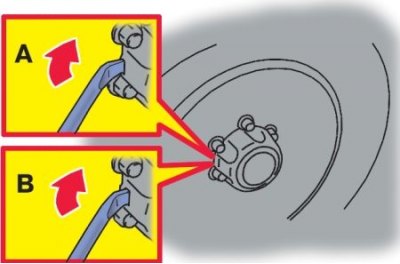
6. Loosen the wheel nuts with a wrench. Don't remove the nuts yet (A - cars with steel wheels, B - cars with cast aluminum wheels)
7. See subsection 1.33.2 to locate the jacking point near the flat tire, then jack up and raise the vehicle until the wheel is no longer touching the ground.

8. Remove the wheel nuts, then remove the wheel.
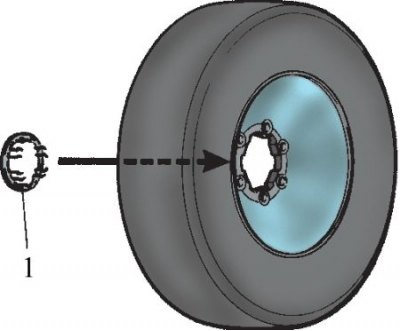
9. Remove the cap fastener (1), covering the fastening nuts on the other side of the wheel.
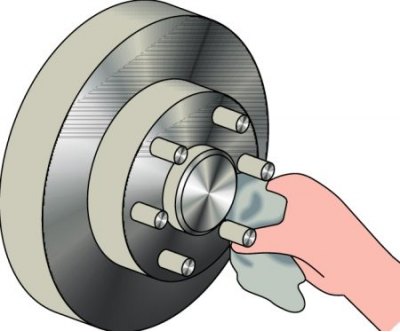
10. Remove dirt from the surface of the wheel hub and from the mounting bolt holes on the wheel, then install the spare wheel.
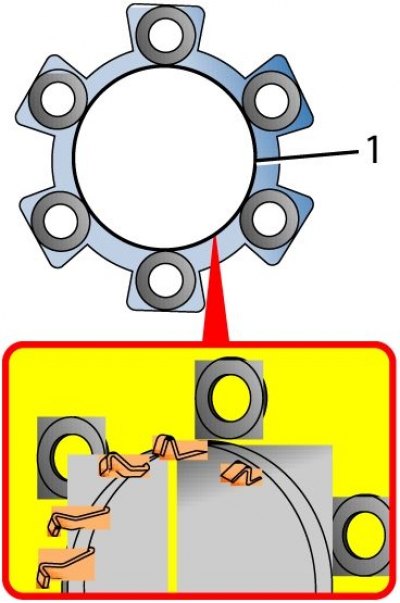
11. Install the cap mount on the spare wheel. Install the mount so that its tabs fit into the corresponding cutouts (1) on the wheel.
Attention! The front wheel cap mount is gold colored and the rear wheel mount is ribbed.

12. On vehicles with steel wheel rims, install the wheel nuts (conical shape) tapered end inward, then secure with your fingers to keep the wheel from dangling.
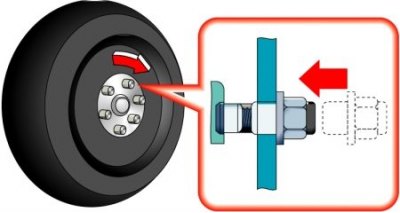
13. On vehicles with aluminum rims, temporarily tighten the wheel mounts (flange nuts) so that the flanges touch the wheel and it does not hang out.
Attention! If all four wheels have been replaced with steel rims, use conical nuts.
Attention! Never lubricate wheel nuts or bolts or they will not hold securely.

14. Slowly lower the vehicle, then gradually tighten all wheel nuts until they are tightened to the correct torque.
The required tightening torque is 100–120 Nm.
Attention! When tightening the wheel nuts, do not apply too much force.
Attention! For example, don't put your foot on a wrench, and don't use a very long crowbar or tube to increase the leverage when using a wrench.
15. Lower a jack and get it from below the car. Place the jack in place and place the flat tire on the spare wheel bracket. Repair a flat tire as soon as possible.
16. Check tire pressure. The recommended pressure is indicated on a label affixed to the inside of the driver's door.
Attention! If the steering wheel vibrates when the vehicle is driven after a wheel has been replaced, have the wheel checked by a professional to check the balance of that wheel.
Attention! For driving safety, try not to fit wheels with different types of tires or use non-standard size wheels.
